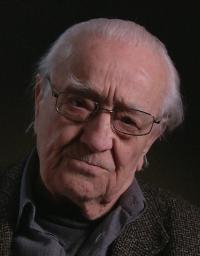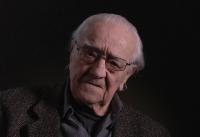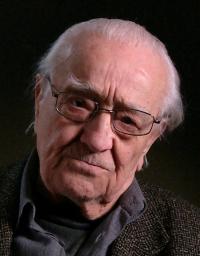One mustn’t go stupid, repeat themselves or become proud; always go forward

Stáhnout obrázek
René Roubíček was born on 23 January 1922 in Prague. He attended an experimental elementary school in the Nusle district. The pupils led by Miloslav Disman would regularly recite and René along with his two years older brother were members of Dismans children‘s radio ensamble. Ever since second grade he was drawing and painting. Because of the closure of Prague‘s Academy of Fine Arts he instead started studying a school of decorative arts. His mentor was Jaroslav Holeček from an atelier focusing on painting and glass. He passed his state exam at Josef Kaplický. Encouraged by their father, at the time of the Protectorate both brothers were engaged in print and distribution of resistance materials. René taught at fine arts ateliers of a glass school in Kamenický Šenov and at the Academy of Fine Arts in Prague. He was head of ateliers of the national enterprise Borské sklo and collaborated with numerous firms and glass factories. René Roubíček became one of the prominent figures of the new Czech glass whose works were exhibited among others at the EXPO 1958 in Brussels and EXPO 1967 in Montreal where they won global accolade. The life works of René Roubíček are characterized by an effort to push the borders of artistic expression and technological possibilities of glass creation. René Roubíček passed away on May, 2018


